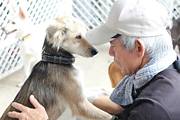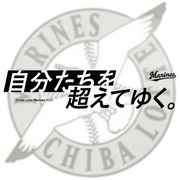お邪魔致します。飼育情報をお届け致します。
「飼育活動は日本の文化」
ちょっと古いのですが、2003年1月のジャパンタイムスで
日本の動物飼育実践が教育記事に取り上げられていましたので、ご紹介します。
Japn Times の記事
Learning from living things, often the hard way | The Japan Times
Online
(元記事・英文)
http://
Monday, Jan. 13, 2003
MATTER OF COURSE
「TEACHERS' PETS
Learning from living things, often the hard way」
By ALICE GORDENKER(2人の子供を日本の公立小学校に通わせているアメリカ人の記者)
「厳しい事もあるけど、生き物から学ぶ」
筆者は、日本の公立小学校に子どもを通わせているアメリカ人の母親で、
学校のハムスターをホームステイさせた経験を持っており、
自分の子が学校のハムスターによって得た影響を踏まえて
書いています。
ーーーーーーーーーーーーーーーーーーーーー
「時に厳しい事もあるけど、生き物から学ぶ」
日本では、普通に公立園・小学校で動物が飼われている。
アメリカでも担任の考えで、飼っている事例があるが、
日本がアメリカと異なることは
飼育活動の飼育舎や方法の体制が構築されていることだ。
目的は、もちろん科学への基礎の構築とともに、
命の大切さ、同情心、生きとし生けるもへの敬意を持つことであり
直接生命ある動物を使って教育がなされている。
例として、子どもが世話を忘れたため、金魚が全滅するような例も
あるが、それは子ども達が命の大切さを学ぶ良い機会であった。
また、大事にしていたウサギが病死して子ども達が悲しんだ数日後、
男の子達が階段で危険な悪ふざけをしていたのを見た子が、
「あなた達に何かあったらみんなが悲しむよ、
ウサギが死んだ時悲しんだみたいに」といさめたら
直ぐに悪ふざけを止めたので、教師が、ウサギの死が命の
大切さを教えたと考えている(*1)。
・
・
・
などと書かれています。
休日の世話の課題も取り上げられており、中川が
保護者や地域の支援を得るようにと提案していることが、
鎌倉(*2)の親子が40組支援に来る話とともに、取り上げられています。
私は当時取材を受けませんでしたが、エピソードの資料を示します。
*1 石島敦子「命の大切さ〜その思いを共有できる学校飼育活動〜」
飼育研究会会誌「動物飼育と教育」Vol.2 (全国学校飼育動物研究会)
*2 竜田孝則(休日飼育から生まれた動き)
「学校・園での動物飼育の成果 〜心・いのち・脳を育む〜」P90(緑書房)
<全文>
Japan Tims
Home<Life in Japa
Monday, Jan. 13, 2003
MATTER OF COURSE
TEACHERS' PETS
Learning from living things, often the hard way
By ALICE GORDENKER
Since I write this column at home, school holidays are always a
problem. It's impossible to get any work done with my kids hanging
around. One day during the recent winter holidays, I complained about
feeling pressured. The deadline for today's column was looming, but I
didn't even have a topic.
"Write about our hamsters," my younger son suggested.
I rolled my eyes. "I write an education column. How can I possibly
write about our hamsters?"
"We wouldn't have them if schools didn't have pets," my son retorted.
I thought for a minute. He was right. I never intended to have pets.
We have them only because, unbeknown to us, the school hamster was in
a family way when we took care of her one vacation. I patted my boy on
the head and went to my computer to write.
Almost all Japanese kindergarten and elementary schools have pets so
students have an opportunity to interact with animals. The pets
usually belong to the entire school, not just one class, and families
often pitch in to help. The first year we were in Japan, it was
decided that the hamster in my son's kindergarten would spend the
summer holiday with several families in turn. By the time she came to
us, the hamster was noticeably plumper. I just figured the family
before us had been too generous with the sunflower seeds. So it was a
complete surprise, a few mornings later, to discover a litter of
newborns in the cage. Watching the babies grow was a wonderful
experience for our family, and we grew attached. When Mommy Hamster
went back to school, we kept two babies.
I was curious about why so many Japanese schools keep pets. Sure,
there are pets in American schools, but it's far from universal. It
depends mostly on whether teachers are willing to make the effort.
When my older son was in first grade in the United States, he had a
terrific teacher who filled her classroom with animals. There were
fish and lizards and a pair of guinea pigs that were constantly doing,
well, what pairs of guinea pigs do. ("It's the natural way to teach
children about sex!" his teacher enthused.) But she had to do most of the work of caring for all those pets, and many teachers are
understandably unwilling to add pet-care to their workload.
Things are different here in Japan. There's an infrastructure for pets
in schools. Most schools have large pens in the schoolyard to house
animals. And there's a system in place so that students do most of the
pet-care. Our school keeps chickens. At first this struck me as crazy
because the birds are so damn noisy. Our rooster is a bit of a rowdy
who crows loudly at inopportune times, his favorite being the solemn
moments of school ceremonies. But I soon realized that cockadoodledoos
are heard over school walls throughout Japan. Chickens are so popular
as school pets that there is an entire Web site devoted to the
subject, complete with pinups of handsome birds.
At virtually all schools in Japan, students help with cleaning and
other jobs. There is usually a roster of special tasks handled by
older students. At our school, the fifth- and sixth-graders serve on
committees to help plan events, make announcements and keep equipment
in order. It's easy to incorporate pet care into this system, and
almost all schools have a shiiku iinkai (animal-care committee).
The number of schools with pets, and the number of pets per school,
jumped in 1991, when the Education Ministry introduced a new subject
called seikatsu-ka (life studies). The ministry's curriculum
guidelines for this and other subjects, including moral education,
recommend that schools keep pets so children can learn from direct
interaction with living things.
Why all this emphasis on school pets? Of course students learn basic
science from pets. That birds lay eggs while mammals give birth to
live young. But Japanese teachers will tell you that children also
learn responsibility, compassion and respect for living things.
Some lessons can be hard ones. In one fourth-grade class, the kids on
aquarium-cleaning duty moved half a dozen goldfish into a bucket. But
they got distracted and forgot to put them back. All the fish died. It
was an upsetting event for the class, but a good opportunity to learn
about responsibility to the living things that depend on them.
At another school, children suffered when a pet rabbit died suddenly.
A few days later, a student saw two classmates fooling around on the
stairs and scolded them. "That's dangerous! If you fall down and die,
a lot of people will be sad, just like when the rabbit died." The boys
stopped. A teacher who witnessed the incident said feeling sad about
the rabbit helped students learn to value life.
But appreciation for school pets may be waning. Mihoko Nakagawa, head
of the Veterinary Council for Animals in Schools, says she sees a new
tendency among teachers to regard pets as too much trouble,
particularly since the adoption of the five-day school week nearly a
year ago. Longer weekends make it more difficult to care for pets
properly, and more of the work falls on school staff.
Nakagawa recommends that parents and neighbors step in to help care
for school pets. A school in Kamakura, for example, formed a committee
of 40 parent-child pairs to care for the school bunnies on Saturdays
and Sundays. At other schools, students take turns having pets for
weekend "home stays."
I know how much my children have benefited from school pets, so I
think it's reasonable for parents to help out. But parents should be
forewarned that getting involved carries the risk of ending up with a
permanent pet, like we did.
So watch out for unusually fat hamsters.
Alice Gordenker is a Tokyo-based writer and the mother of two American
children attending Japanese public elementary school.
*******************
公社)日本獣医師会 学校動物飼育支援対策検討委員会副委員長
全国学校飼育動物研究会 事務局長
中川 美穂子
mihi-n@mua.biglobe.ne.jp
〒202-0023
西東京市新町5-16-29
Tel0422-53-7099 Fax0422-56-9086
「学校飼育動物を考えるページ」
http://
「全国学校飼育動物研究会」
http://
ーーーーーーーーーーーーーーーーーーーー
白梅学園大学大学院子ども学修士
全国学校飼育動物獣医師連絡協議会(CAS) 主宰
公社)東京都獣医師会 理事
*******************
「飼育活動は日本の文化」
ちょっと古いのですが、2003年1月のジャパンタイムスで
日本の動物飼育実践が教育記事に取り上げられていましたので、ご紹介します。
Japn Times の記事
Learning from living things, often the hard way | The Japan Times
Online
(元記事・英文)
http://
Monday, Jan. 13, 2003
MATTER OF COURSE
「TEACHERS' PETS
Learning from living things, often the hard way」
By ALICE GORDENKER(2人の子供を日本の公立小学校に通わせているアメリカ人の記者)
「厳しい事もあるけど、生き物から学ぶ」
筆者は、日本の公立小学校に子どもを通わせているアメリカ人の母親で、
学校のハムスターをホームステイさせた経験を持っており、
自分の子が学校のハムスターによって得た影響を踏まえて
書いています。
ーーーーーーーーーーーーーーーーーーーーー
「時に厳しい事もあるけど、生き物から学ぶ」
日本では、普通に公立園・小学校で動物が飼われている。
アメリカでも担任の考えで、飼っている事例があるが、
日本がアメリカと異なることは
飼育活動の飼育舎や方法の体制が構築されていることだ。
目的は、もちろん科学への基礎の構築とともに、
命の大切さ、同情心、生きとし生けるもへの敬意を持つことであり
直接生命ある動物を使って教育がなされている。
例として、子どもが世話を忘れたため、金魚が全滅するような例も
あるが、それは子ども達が命の大切さを学ぶ良い機会であった。
また、大事にしていたウサギが病死して子ども達が悲しんだ数日後、
男の子達が階段で危険な悪ふざけをしていたのを見た子が、
「あなた達に何かあったらみんなが悲しむよ、
ウサギが死んだ時悲しんだみたいに」といさめたら
直ぐに悪ふざけを止めたので、教師が、ウサギの死が命の
大切さを教えたと考えている(*1)。
・
・
・
などと書かれています。
休日の世話の課題も取り上げられており、中川が
保護者や地域の支援を得るようにと提案していることが、
鎌倉(*2)の親子が40組支援に来る話とともに、取り上げられています。
私は当時取材を受けませんでしたが、エピソードの資料を示します。
*1 石島敦子「命の大切さ〜その思いを共有できる学校飼育活動〜」
飼育研究会会誌「動物飼育と教育」Vol.2 (全国学校飼育動物研究会)
*2 竜田孝則(休日飼育から生まれた動き)
「学校・園での動物飼育の成果 〜心・いのち・脳を育む〜」P90(緑書房)
<全文>
Japan Tims
Home<Life in Japa
Monday, Jan. 13, 2003
MATTER OF COURSE
TEACHERS' PETS
Learning from living things, often the hard way
By ALICE GORDENKER
Since I write this column at home, school holidays are always a
problem. It's impossible to get any work done with my kids hanging
around. One day during the recent winter holidays, I complained about
feeling pressured. The deadline for today's column was looming, but I
didn't even have a topic.
"Write about our hamsters," my younger son suggested.
I rolled my eyes. "I write an education column. How can I possibly
write about our hamsters?"
"We wouldn't have them if schools didn't have pets," my son retorted.
I thought for a minute. He was right. I never intended to have pets.
We have them only because, unbeknown to us, the school hamster was in
a family way when we took care of her one vacation. I patted my boy on
the head and went to my computer to write.
Almost all Japanese kindergarten and elementary schools have pets so
students have an opportunity to interact with animals. The pets
usually belong to the entire school, not just one class, and families
often pitch in to help. The first year we were in Japan, it was
decided that the hamster in my son's kindergarten would spend the
summer holiday with several families in turn. By the time she came to
us, the hamster was noticeably plumper. I just figured the family
before us had been too generous with the sunflower seeds. So it was a
complete surprise, a few mornings later, to discover a litter of
newborns in the cage. Watching the babies grow was a wonderful
experience for our family, and we grew attached. When Mommy Hamster
went back to school, we kept two babies.
I was curious about why so many Japanese schools keep pets. Sure,
there are pets in American schools, but it's far from universal. It
depends mostly on whether teachers are willing to make the effort.
When my older son was in first grade in the United States, he had a
terrific teacher who filled her classroom with animals. There were
fish and lizards and a pair of guinea pigs that were constantly doing,
well, what pairs of guinea pigs do. ("It's the natural way to teach
children about sex!" his teacher enthused.) But she had to do most of the work of caring for all those pets, and many teachers are
understandably unwilling to add pet-care to their workload.
Things are different here in Japan. There's an infrastructure for pets
in schools. Most schools have large pens in the schoolyard to house
animals. And there's a system in place so that students do most of the
pet-care. Our school keeps chickens. At first this struck me as crazy
because the birds are so damn noisy. Our rooster is a bit of a rowdy
who crows loudly at inopportune times, his favorite being the solemn
moments of school ceremonies. But I soon realized that cockadoodledoos
are heard over school walls throughout Japan. Chickens are so popular
as school pets that there is an entire Web site devoted to the
subject, complete with pinups of handsome birds.
At virtually all schools in Japan, students help with cleaning and
other jobs. There is usually a roster of special tasks handled by
older students. At our school, the fifth- and sixth-graders serve on
committees to help plan events, make announcements and keep equipment
in order. It's easy to incorporate pet care into this system, and
almost all schools have a shiiku iinkai (animal-care committee).
The number of schools with pets, and the number of pets per school,
jumped in 1991, when the Education Ministry introduced a new subject
called seikatsu-ka (life studies). The ministry's curriculum
guidelines for this and other subjects, including moral education,
recommend that schools keep pets so children can learn from direct
interaction with living things.
Why all this emphasis on school pets? Of course students learn basic
science from pets. That birds lay eggs while mammals give birth to
live young. But Japanese teachers will tell you that children also
learn responsibility, compassion and respect for living things.
Some lessons can be hard ones. In one fourth-grade class, the kids on
aquarium-cleaning duty moved half a dozen goldfish into a bucket. But
they got distracted and forgot to put them back. All the fish died. It
was an upsetting event for the class, but a good opportunity to learn
about responsibility to the living things that depend on them.
At another school, children suffered when a pet rabbit died suddenly.
A few days later, a student saw two classmates fooling around on the
stairs and scolded them. "That's dangerous! If you fall down and die,
a lot of people will be sad, just like when the rabbit died." The boys
stopped. A teacher who witnessed the incident said feeling sad about
the rabbit helped students learn to value life.
But appreciation for school pets may be waning. Mihoko Nakagawa, head
of the Veterinary Council for Animals in Schools, says she sees a new
tendency among teachers to regard pets as too much trouble,
particularly since the adoption of the five-day school week nearly a
year ago. Longer weekends make it more difficult to care for pets
properly, and more of the work falls on school staff.
Nakagawa recommends that parents and neighbors step in to help care
for school pets. A school in Kamakura, for example, formed a committee
of 40 parent-child pairs to care for the school bunnies on Saturdays
and Sundays. At other schools, students take turns having pets for
weekend "home stays."
I know how much my children have benefited from school pets, so I
think it's reasonable for parents to help out. But parents should be
forewarned that getting involved carries the risk of ending up with a
permanent pet, like we did.
So watch out for unusually fat hamsters.
Alice Gordenker is a Tokyo-based writer and the mother of two American
children attending Japanese public elementary school.
*******************
公社)日本獣医師会 学校動物飼育支援対策検討委員会副委員長
全国学校飼育動物研究会 事務局長
中川 美穂子
mihi-n@mua.biglobe.ne.jp
〒202-0023
西東京市新町5-16-29
Tel0422-53-7099 Fax0422-56-9086
「学校飼育動物を考えるページ」
http://
「全国学校飼育動物研究会」
http://
ーーーーーーーーーーーーーーーーーーーー
白梅学園大学大学院子ども学修士
全国学校飼育動物獣医師連絡協議会(CAS) 主宰
公社)東京都獣医師会 理事
*******************
|
|
|
|
|
|
|
|
Mixi ワン’sパートナーの会 更新情報
-
最新のイベント
-
まだ何もありません
-
-
最新のアンケート
-
まだ何もありません
-
Mixi ワン’sパートナーの会のメンバーはこんなコミュニティにも参加しています
人気コミュニティランキング
- 1位
- 広島東洋カープ
- 55345人
- 2位
- mixi バスケ部
- 37847人
- 3位
- 千葉 ロッテマリーンズ
- 37151人
























